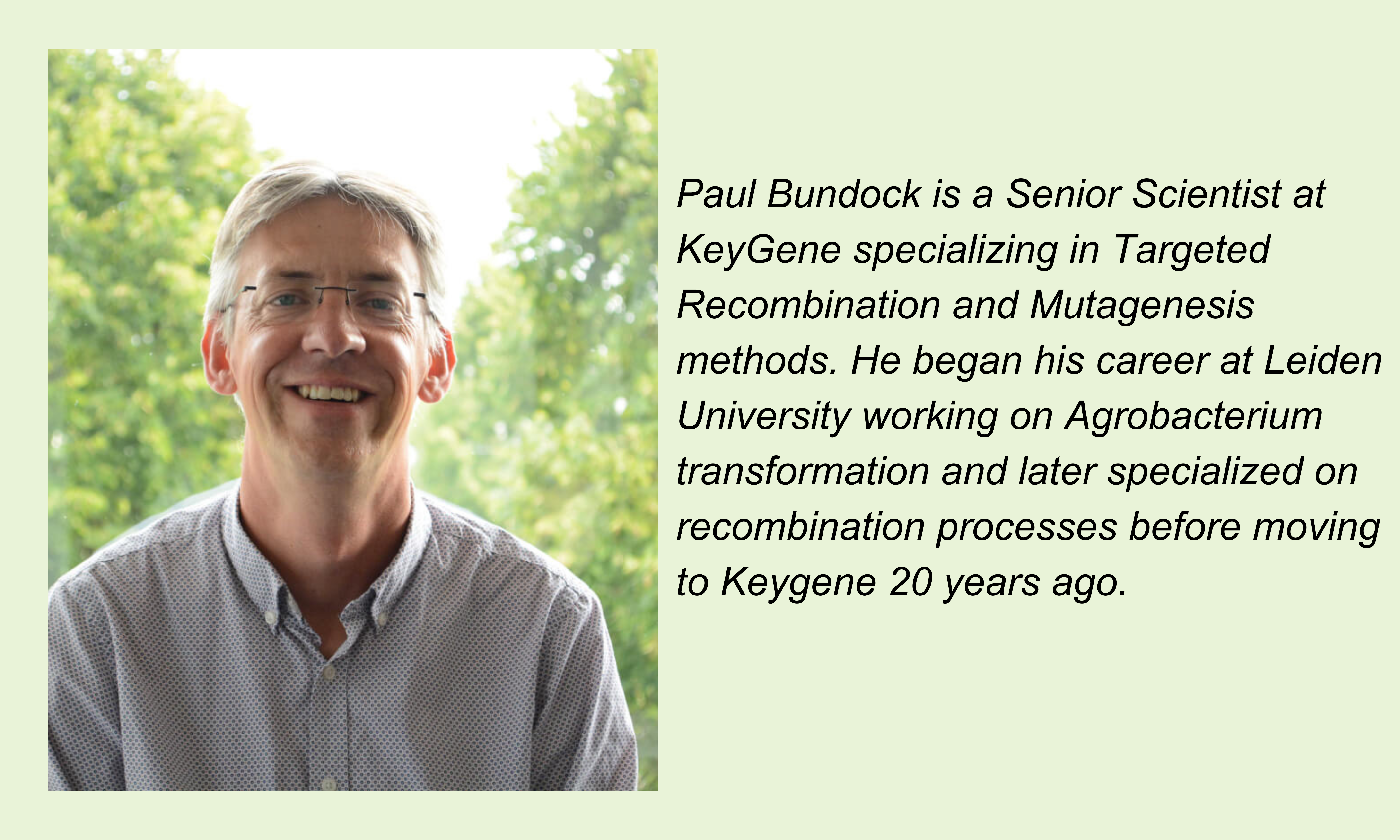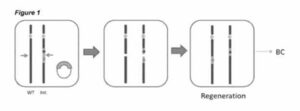15 May 2024
Inventor Talks
Targeted Translocations with Paul Bundock
In Inventor Talks, we chat with the clever minds in KeyGene’s community who are behind innovative ideas in crop improvement. We sit down with inventors to learn about their patented creations, how they developed them, and what they mean for the world.
In this Inventor Talk, we’re excited to introduce Paul Bundock, co-inventor of a KeyGene patent on Targeted Translocations. Recently, KeyGene successfully defended this patent against a reexamination challenge, reaffirming its significance in the field of crop improvement. Read further as we dive into the what, why and how of this invention.

What is targeted translocation?
Targeted translocations are designed to change the plant genome on a large scale; you can think of them as swaps between pairs of chromosomes.
To a certain extent it is similar to what naturally occurs during the process of meiosis, where genetic information on the chromosomes is shuffled to make new combinations in the reproductive cells. In meiosis, paired chromosomes from each parent break at corresponding locations, swap segments, and then reconnect, creating new genetic variations fundamental to evolution.
Unlike meiotic recombination, targeted translocations are performed in regular plant cells, such as those from leaves. We can also target pre-determined pieces of chromosomes to swap. To do this, we introduce reagents into the cells that can cut the DNA at a specific sequence in each homologous chromosome targeted. When the cell then re-joins these breaks, it can result in the exchange of chromosome pieces. These changed cells can be identified and then regenerated into mature plants.
What problem does your invention address?
Plant breeding traditionally relies on meiotic recombination to produce new gene combinations.
However, this process does not occur uniformly throughout the genome as such a process requires homology. In some cases, large sequence differences between homologous chromosomes hinder meiotic recombination, preventing the generation of new gene combinations in this region.
This can be particularly problematic when such a region includes genes that negatively affect the plant’s performance. The lack of recombination means that these “undesired” genes are always inherited and are not lost through meiosis, a process termed linkage drag. Targeted translocations do not require homology; open ends are fused using non-homology end-joining repair after being cut. This process therefore offers a solution to linkage drag, which makes it a valuable tool for breeders.

The patented “Targeted Translocation” invention achieves targeted translocation between two homologous or homeologous chromosomes in a plant cell via the introduction of a double-strand break in each of the two chromosomes using a site-specific nuclease, such as a ZFN, a meganuclease, a TAL effector nuclease or a CRISPR system nuclease, and subsequently rejoining exchanged chromosome arms.
Recently, you were involved in successfully defending a KeyGene patent on targeted translocations. What does that mean for what KeyGene can offer?
Yes, we’re very proud of what our invention can offer. Our work on targeted translocations demonstrates that the repair process can facilitate the exchange of DNA between different chromosomes – an exciting observation. This change in the DNA sequence has now been used to alter alleles for both research and application.
Up until now, plant breeders relied upon meiotic recombination to create novel (semi-random) combinations of genes. Selecting the fittest plants from these combinations was the basis for breeding.
With targeted translocations, the breeder now has the option to produce specific, desired gene combinations and eliminate linkage drag. This is a unique solution where none other seems to exist and therefore immensely valuable for crop improvement.
By focusing on incorporating desired traits and removing negative ones without introducing foreign DNA, targeted translocation is also an advantageous tool in the kit for plant breeding. The adaptability of this method, particularly with the use of CRISPR-system nucleases, ensures that this invention remains versatile and easily applicable.
How did you develop this idea?
The idea came out of our work with targeted DNA-cutting enzymes and single-cell regeneration. We were using these enzymes to introduce small mutations and observed that in a single cell often both chromosomes were cut and mutated. We then reasoned that these double cuts may be suitable for creating targeted translocations. By crossing two genetically distinct parents, we were able to detect targeted translocations in our experiments and regenerate new plants from these cells.
What are the next steps for this invention and your research?
Having successfully cultivated plants with targeted translocations in the past, we’re now refining the technology to address relevant challenges in breeding. Beyond targeted translocations, we’re exploring other approaches to alter the large-scale structure of chromosomes. We’re actively investigating these various possibilities to develop different types of applications in the field of chromosomal editing.
Licensing at KeyGene
Through licensing, KeyGene aims to provide its partners access to its IP of breakthrough technology innovations. Our technologies and trait components are accessible to breeding companies, academic organizations, as well as commercial service providers. Many global seed companies including Bayer, Enza Zaden, Rijk Zwaan, Limagrain Vegetable Seeds and Takii & Co. Ltd have one or more licenses for our technologies. KeyGene’s technologies also find application outside Agrofood, such as in cancer diagnostics. You can take a look at the different licensing opportunities of KeyGene here
Find out more
- Find out more about the Targeted Translocation patent here
- Keep up to date with KeyGene on our LinkedIn
- Want to speak to us directly about our work? You can contact us here.